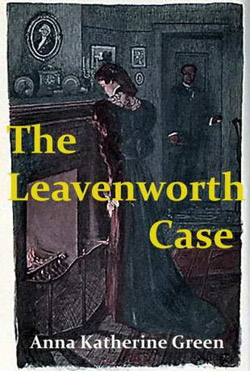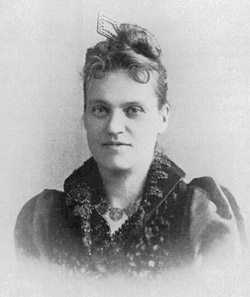
The Leavenworth Case (1878) by Anna Katharine Green is a milestone of the genre. Wilkie Collins, Arthur Conan Doyle, and Agatha Christie admired it. Yale Law School, among others, assigned it to its students to demonstrate the snares associated with circumstantial evidence. So cleverly plotted is it that members of the Pennsylvania Legislature insisted that Anna Katharine Green must be a pseudonym for some man, because “the story was manifestly beyond a woman’s powers.” Just goes to show you that government has always been populated by idiots.
Green’s first novel predates the first appearance of Sherlock Holmes by nine years, yet it seems much more modern. Particularly striking are the many detective story conventions that appeared in the novel without traceable antecedents. These include a body discovered in a locked room, a changed will, ballistics, a crime scene map, an incriminating letter, a second murder, and a daring denouement.
Green sets a brisk pace (at first) with the death of Horatio Leavenworth, followed by a coroner’s inquest that dramatically lays out the clues and suspects and introduces the reader to master detective Ebenezer Gryce. Featured in some dozen of Green’s later books, Gryce claims the mantle of the first recurring detective in a series of novels. (Edgar Allan Poe’s archetypal detective C. Auguste Dupin appeared only in three short stories.)

Green occupies an undisputed top spot in the creation of the modern detective story, yet while The Leavenworth Case is recognized as a “significant” contribution in the recently published A Companion to Crime Fiction, the author and her works rate only a few sentences, while pages and pages are given to Agatha Christie, Dorothy Sayers, and Chester Himes. What’s up with that? And why did Green’s work drop completely off the radar? The Leavenworth Case does suffer from the romantic sentimentalism of its time. It focuses too much on its love story and not enough on Detective Gryce. It also bogs down in the second half, and the ending is unsatisfying. Nevertheless, The Leavenworth Case, overflowing with detection wizardry the world had never seen before, is a fascinating read that no detective story devotee should miss.
Susan Amper, author of How to Write About Edgar Allan Poe, still mourns the loss of her Nancy Drew collection.

I read this over the summer and although it has lighthearted moments, it is weighed down a bit by the vernacular of the time period. The proper Miss Leavenworth is used for more than one character; a bit confusing at times. All in all, I would recommend it.
I recently discovered Anna Katherine Green and have read some of her short stories. I’d love to read this novel. Thanks for letting us know more about her and her work.
Never heard of her but only just recently read any Wilkie Collins (after reading Dan Simmons’ Drood). Sounds interesting.
She was married to [url=http://www.pbs.org/wgbh/roadshow/archive/200605A29.html]Charles Rohlfs[/url], an incredible Arts & Crafts furniture designer/maker whose work also is virtually forgotten, or at least vastly overshadowed by Gustav Stickley and others. (Click on the link to see one of his chairs on Antiques Roadshow.) An exhibition of his work at the Metropolitan Museum of Art in NYC late last year mentioned Anna Katherine Green as the “first American woman mystery writer.” Thanks for reminding me to investigate!
Anna Katherine Green was not quite the first “American woman mystery writer.” American dime novelist Metra Victoria Fuller published The Dead Letter in 1867 under the pseudonym Seeley Regester. Green’s work though was the more popular.